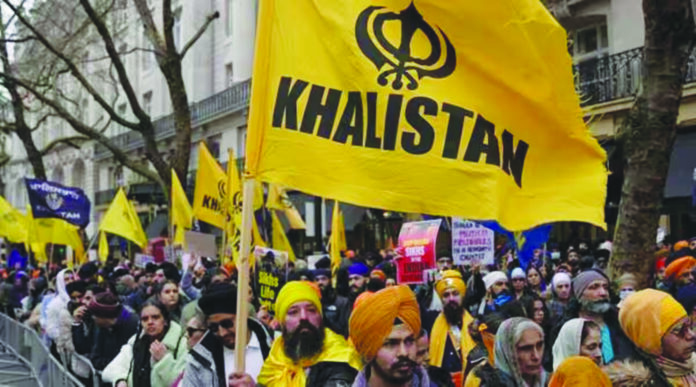India used to boast that she has “long maintained with Canada a bilateral relationship built on shared values, including democracy, human rights, and the rule of law”. The cobweb of this myth was exploded when Canadian Prime Minister Justin Trudeau “accused India of involvement in Nijjar’s murder” In June 2023, Nijjar, the chief of the Khalistan Tiger force was shot dead in British Columbia. Canada claims to have credible evidence that India masterminded and executed this murder on the Canadian soil.
“The Five Eyes” have supported Canada’s allegation. India surmises that that the Five Eyes might have provided irrefutable evidence to Canada. The word “eyes” connotes top secret classification. The alliance includes Canada, the United States, Australia, New Zealand and Britain. This organisation uses cutting-edge technology tools like satellite imagery, cryptanalysis, sigint traffic analysis, etc.
In Episode 1314 of Cut the Clutter, Shekhar Gupta, Editor-in-Chief of the Print explains what the alliance is, traces its roots in World War II, and unwraps the secrecy around its operations until about a decade ago.
The Khalistan movement, which emerged in the 1970s and early 1980s, advocates for the creation of a separate Sikh homeland within India. While the government had previously suppressed the movement, it has recently gained momentum, particularly among a Sikh Diaspora in Canada. India fears the movement would intensify not only in India but also spill over to Diaspora in the other countries.
How the movement began
In 1995, India’s Supreme Court clarified that the term Khalistan was not seditious and could be used to further a non-violent movement. The term first appeared in a pamphlet in the 1940s. During The pamphlet demanded Sikhistan and Azad Punjab, but the Second World War and other events overshadowed the demand. As time went by, Pakistan weakened and India grew stronger by devouring even the Princely States.
The attack on the Golden temple and anti Sikh riots/massacre of 1984 rejuvenated the Khalistan movement. However, fissures within the Sikh community weakened the movement. Badal family damaged Sikh institutions in the last two decades; The Sikhs are now badly divided. . Half the population – the women; one-third population – the Dalits; and, about 40 per cent Hindus remain silent spectators to the movement. The better-off Sikhs also preferred to stay mute.
The total Sikh population worldwide is about 26 million. Around 18 million live in Punjab, four to five million live in the rest of India, and another three to four million live abroad. These Sikhs, spread out from Assam to Kutch, Kashmir to Tamil Nadu, are mostly well settled, and have businesses spread across the country.
Since BJP’s debut, all minorities are being persecuted in India. The Hindu majoritarian government is trying to carve out a Hindu Rashtra (nation). Muslims are lynched, Christians targeted, and Parliament reverberates with religious chants.
Lessons of farmer’s movement
Most social movements in the Punjab had been peaceful except the two. One by Guru Gobind Singh, the tenth Sikh guru, against Mughal rulers, and the rule of Maharaja Ranjit Singh in erstwhile Punjab in the form of Khalsa Raj from 1801 to 1839.
Modi’s nightmare is that Jat sons of the soil may join the Khalistan movement. A year-long farmer’s protest against draconian farm laws compelled macho (56-inch chest) Narendra Modi to rescind them.
The farmers believed that the laws were intended to favour crony capitalism (Adanis, Advanis and their ilk). The farmers perceived them as a surreptitious and predatory unilateral attempt to take away their lands, their single source of livelihood. Diaspora sympathizers flooded protesters with food, fruit and even quintals of American almonds (from US-based toot brethren).
To express solidarity with the farmers, 18 opposition parties have decided to boycott the Indian president’s address (January 29, 2021) to joint sitting of the parliament at the start of the budget session (The Hindu January 28, 2021). They criticised the government for obduracy when 155 farmers, braving water cannons, tear gas and lathi charges, have already lost their lives.
To `strongman’ Modi’s chagrin, the protest assumed an all-Indian dimension as Bhim-army chief Chandra Sheikhar Azad, founder of Azad Samaj party (open-society party) joined the protesters with declaration `ek juth ho kar larna hai’ (we have to fight united).
The famers’ stamina baffled the arrogant Modi government’s imagination. The farmers turned their trolleys into makeshift dormitories. The sick and tired farmers were relieved to be replaced with fresh batches from homes far afield. Women back home plunged into the fields to take care of cultivated land and livestock.
Simmering problems
The Punjabi farmer is debt-ridden. Over 2000 farmers commit suicides every year. The limit of bank loan per acre was enhanced nearly six times. By 2006, the limit was enhanced to Rs.3 lakh per acre while net profit per acre hovered around Rs.50,000. Banks also softened the earlier harsh conditions for loan approvals in the name of helping farmers. The decade that followed found farmers entangled in a debt trap, with arhatiyas (middlemen) on one side and banks on the other.
The average debt among small and marginal farmers is nearly eight times their annual income compared to 2.7 times among medium and large farmers. In contrast to the pre-Green Revolution period, small and marginal farmers now lease out their lands to rich farmers. Thus, the rate of suicide is also high among small and marginal farmers as compared to rich farmers.
Rural indebtedness is an enormous problem: of the more than 9,000 farmers who killed themselves in the 2000-2018 periods, 88 per cent were deep in debt. Unemployment at 6.8 per cent; 34 per cent among women in the State.
Fertilizer consumption per hectare is 223.46 kg, compared to national average of an irrigation canal in Fatehpur village of Patiala district in Punjab no longer carries water for irrigating the fields. Farmers now depend on tube wells, which have caused the water table to drop drastically in the region.
Mechanisation and the use of insecticides squeezed labour demand. The introduction of new cash crops slashed the demand for labour to nearly two months in a year, that is, only during the peak periods. The introduction of paddy crops in Punjab also attracted trained and cheap labour from Bihar and eastern Uttar Pradesh at the cost of local labour.
The continuous neglect of canal irrigation has shrunk the area under canal irrigation from 37 per cent to 27 per cent. Free power supply to more than 14 lakh tube wells also added to the neglect of canal irrigation. The excessive extraction of underground water through tube wells has pushed 75 percent of rural blocks into the dark zone (an area where groundwater depletion exceeds the rate of recharging). It is believed that in the next 15 years, agriculture in Punjab will face a severe crisis for want of irrigation water.
Groundwater levels are falling by 0.49 metres a year. At the current rate of depletion, groundwater in the first 100 m will get exhausted by 2029 and drop below 300 m by 2039.
It is time India stopped blaming the pro-Khalistan movement as there are genuine grievances to be addressed.





















